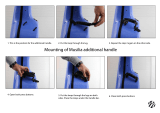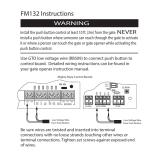
Contents
vi
Chapter 12. Doppler Sonar
12.1 Laying the Transducer cable
・・・・・・・・・・・・・・・・・・・・・・・・・・・・・・・・・・・・・・・・・
12-1
12.2 Installation of DS-30 transducer
・・・・・・・・・・・・・・・・・・・・・・・・・・・・・・・・・・・・・・
12-2
12.2.1 Hull fixed tank
・・・・・・・・・・・・・・・・・・・・・・・・・・・・・・・・・・・・・・・・・・・・・・・・・・・
12-2
12.2.2 Gate-valve Tank
・・・・・・・・・・・・・・・・・・・・・・・・・・・・・・・・・・・・・・・・・・・・・・・・・
12-7
12.3 Installation of DS-50 transducer
・・・・・・・・・・・・・・・・・・・・・・・・・・・・・・・・・・・・・・
12-10
12.3.1 Hull tank
・・・・・・・・・・・・・・・・・・・・・・・・・・・・・・・・・・・・・・・・・・・・・・・・・・・・・・・・・
12-10
12.3.2 Installing tank with Gate-valve
・・・・・・・・・・・・・・・・・・・・・・・・・・・・・・・・・・・・
12-13
12.4 Installation of DS-80 transducer
・・・・・・・・・・・・・・・・・・・・・・・・・・・・・・・・・・・・・・
12-19
12.4.1 Gate-valve tank: DS-782
・・・・・・・・・・・・・・・・・・・・・・・・・・・・・・・・・・・・・・・・・
12-19
12.4.2 Gate-valve tank: DS-786
・・・・・・・・・・・・・・・・・・・・・・・・・・・・・・・・・・・・・・・・・
12-22
12.4.3 Hull tank: DS-783
・・・・・・・・・・・・・・・・・・・・・・・・・・・・・・・・・・・・・・・・・・・・・・・・
12-25
12.4.4 Hull Tank : DS-784
・・・・・・・・・・・・・・・・・・・・・・・・・・・・・・・・・・・・・・・・・・・・・・・
12-26
12.4.5 Protruded hull tank
・・・・・・・・・・・・・・・・・・・・・・・・・・・・・・・・・・・・・・・・・・・・・・・
12-28
12.5 Example of installations
・・・・・・・・・・・・・・・・・・・・・・・・・・・・・・・・・・・・・・・・・・・・・
12-29
12.5.1 Example of DS-50 installation
・・・・・・・・・・・・・・・・・・・・・・・・・・・・・・・・・・・
12-29
12.5.2 Example of DS-30 installation
・・・・・・・・・・・・・・・・・・・・・・・・・・・・・・・・・・・
12-35
Appendix 1. Acoustic Equipment
AP1.1 Transducer Position (DS-30/50/80, FE-700)
・・・・・・・・・・・・・・・・・・・・・・・・・
AP1-1
AP1.2 Piping Transducer cable
・・・・・・・・・・・・・・・・・・・・・・・・・・・・・・・・・・・・・・・・・・・
AP1-5
AP1.3 Installation on ship with protruded keel
・・・・・・・・・・・・・・・・・・・・・・・・・・・・
AP1-6
Appendix 2. Antenna Installation
AP2.1 Safety measures
・・・・・・・・・・・・・・・・・・・・・・・・・・・・・・・・・・・・・・・・・・・・・・・・・・・・
AP2-1
AP2.2 Antenna arrangement
・・・・・・・・・・・・・・・・・・・・・・・・・・・・・・・・・・・・・・・・・・・・・・
AP2-3
AP2.3 Table of antenna interactions
・・・・・・・・・・・・・・・・・・・・・・・・・・・・・・・・・・・・・・
AP2-16
Appendix 3. Radar Waveguide
AP3.1 Waveguide for X-Band Radar
・・・・・・・・・・・・・・・・・・・・・・・・・・・・・・・・・・・・・・・
AP3-1
AP3.2 Waveguide for S-Band Radar
・・・・・・・・・・・・・・・・・・・・・・・・・・・・・・・・・・・・・・・
AP3-8























